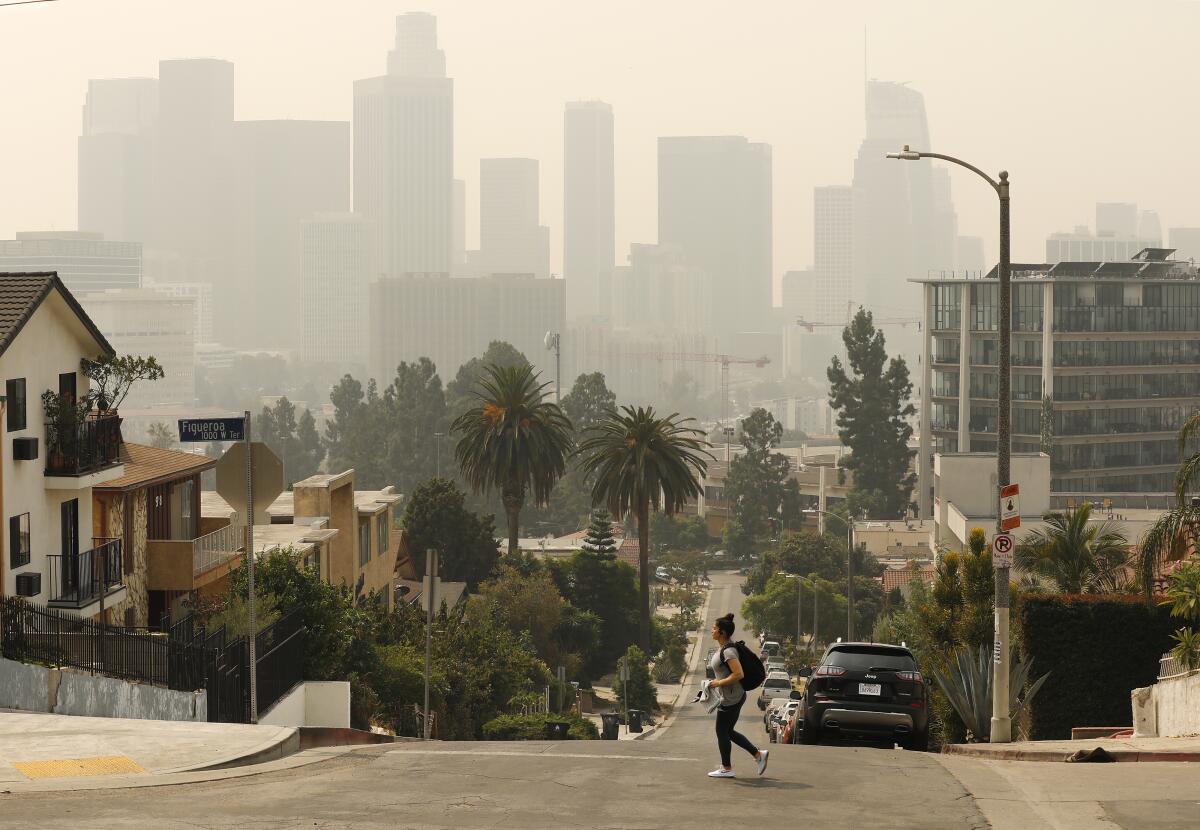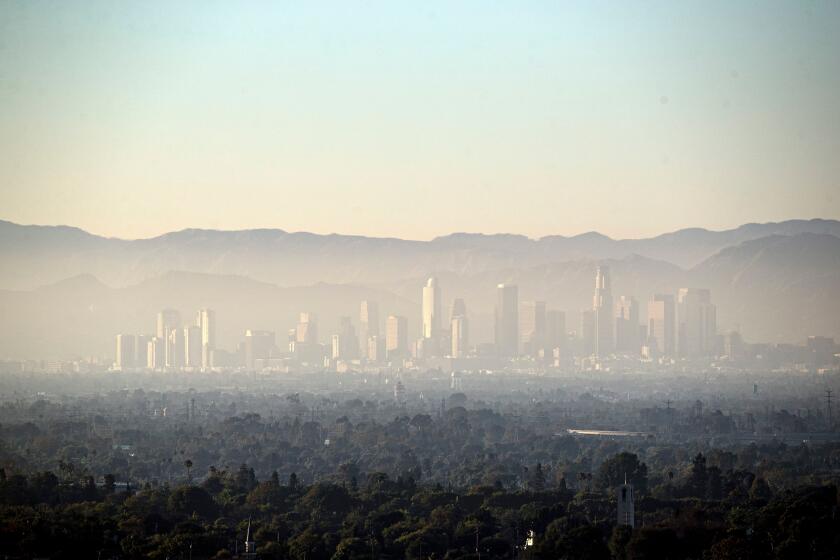Your air quality may be more dangerous than your phone is telling you. The EPA is fine with that

- Share via
The U.S. Environmental Protection Agency’s recent adoption of a more stringent annual limit on fine particulate matter, or soot, fulfills an overdue obligation to curb a pervasive and deadly type of air pollution that triggers asthma, heart attacks, strokes and a host of other health problems.
But the agency made a serious mistake by leaving the 24-hour standard for fine-particle pollution, or PM2.5, at the level set 17 years ago, despite more recent scientific evidence of how harmful soot is even at lower levels of exposure. This limit protects people against short-term spikes in unhealthy air quality and underpins the public forecast and alert system, the air quality index. Americans rely on the AQI to know how dirty the air is, but they will be stuck with an outdated yardstick that understates the health risks.
The U.S. EPA plans to reject Southern California’s plan to clean up ozone pollution, with big penalties for the region. Enough with the blame game. Officials need to get to work.
PM2.5 is composed of health-damaging specks of pollution so tiny they can lodge deep in the lungs and enter the bloodstream. It’s formed largely from vehicles, power plants and other combustion sources, and increasingly from wildfires, which are growing larger and more frequent because of climate change.
It’s troubling to see this kind of failure on something as fundamental as informing the public about bad air days. The daily limit on lung-damaging pollution that the EPA refused to update determines whether the air violates health standards, and is therefore the most important metric on the AQI. The color-coded scale uses six categories from green to maroon to communicate to the public how polluted the air is and how it could affect their health. It triggers air quality alerts on people’s phones and helps parents decide whether it’s safe for their kids with asthma to play outside.
President Biden had the opportunity to fix the Trump administration’s decision to keep in place outdated health standards for smog. Instead the EPA is punting its decision about imposing tougher air quality limits until after the 2024 election.
An EPA spokesperson said agency Administrator Michael Regan decided against strengthening daily limits based on “uncertainty in the epidemiologic studies” about the health effects of short-term exposure to fine-particle pollution and because lowering the annual limit would provide “supplemental protection.” But in doing so, he ignored the advice of the agency’s own experts, members of the Clean Air Scientific Advisory Committee, a majority of whom recommended tightening the 24-hour limit on PM2.5 to between 25 to 30 micrograms per cubic meter, based on health studies showing that the current level “is not adequately protective” against illness and death. Instead the EPA kept the standard at 35 micrograms per cubic meter.
The EPA did make some changes to the AQI “to improve public communications about the health risks from PM2.5 exposure,” a spokesperson said. But it did nothing to modernize the most important metric: the concentration of pollution that determines whether the air is unhealthy or within safe levels.
This inaction is especially disappointing at a time when large swaths of the country are increasingly experiencing prolonged episodes of wildfire smoke that are undermining decades of gains in air quality. California has the nation’s most polluted air, particularly in the Central Valley, Bay Area and Southern California, dominating the list of communities with the worst fine-particle pollution which contributes to thousands of early deaths in the state each year.
The U.S. EPA plans to reject Southern California’s plan to clean up ozone pollution, with big penalties for the region. Enough with the blame game. Officials need to get to work.
The Biden administration gets credit for tightening the annual limit even as big business lobbying groups mounted a campaign to squash the proposal, claiming it would hurt the economy and harm the president’s chances at reelection.
The Clean Air Act doesn’t allow the EPA to set air quality standards based on what they will cost, only on what is necessary to protect public health “with an adequate margin of safety.” That hasn’t prevented past administrations from shirking their obligations for economic or political reasons. Last year, the EPA needlessly delayed action to update ozone pollution standards until after the November election.
The administration whiffed on this one too, squandering the opportunity to update the nation’s air quality alert system to better reflect scientific reality and communicate clearly to the public about the health risks of air pollution.
More to Read
A cure for the common opinion
Get thought-provoking perspectives with our weekly newsletter.
You may occasionally receive promotional content from the Los Angeles Times.











